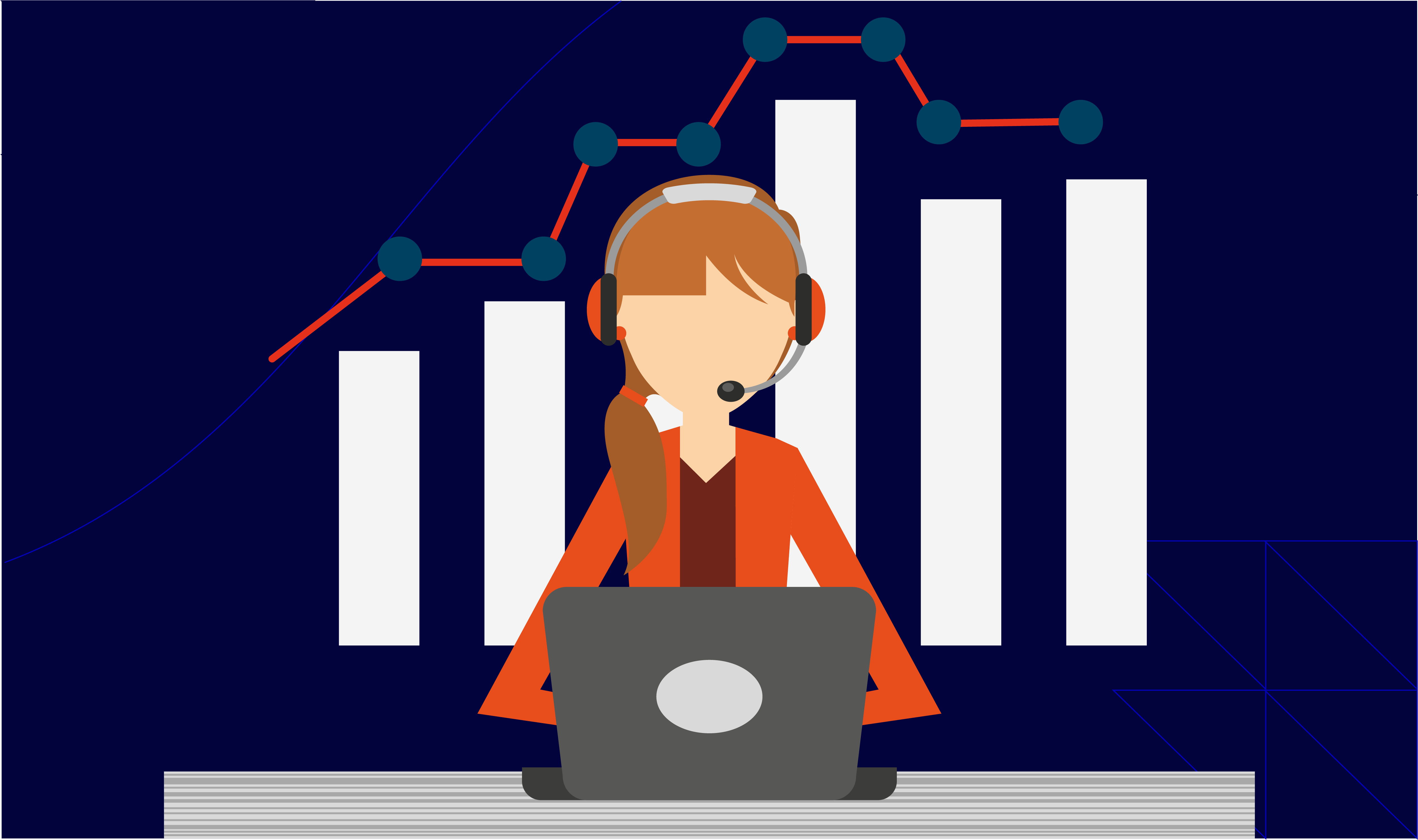By analyzing call center metrics, you can understand how your team is performing. These numbers show how fast calls are answered, how many calls are handled, how long each call takes and how happy customers are after the call. Some common call center metrics most managers track are AHT, CSAT scores, FCR, NPS and more. This article is written for CX leaders (VPs, Directors and Senior Managers) at consumer brands and D2C companies in the US, UK & Australia.
Do you undermine inbound voice support services? Be aware that these call centres are the backbone of excellent customer support! They are often the first real contact a customer has with your company.
Inbound call centers provide prompt and personalised assistance. It leads to higher customer satisfaction and loyalty. Studies found that Customer satisfaction scores (CSAT) for outsourced call center services usually range between 75% and 85%. This indicates a strong correlation between inbound support and positive customer experiences (CX).
However, it takes time and effort to build a strong call centre team. You cannot expect your team to perform at a high level without the right training and tools.
But, how do I know where my team is lacking? Can I track something? Yes, to identify the weak areas, you must track certain numbers, called “call centre metrics”. By looking at these numbers, you can determine if your staff need more training or if any changes are required in how the team works.
In this article, let’s understand what call centre metrics mean and then study nine metrics used to measure performance in a call center. Also, we will cover call center metrics calculations.
What are Call Center Metrics?

Call centre metrics are numbers that show how your call centre or customer support department is performing. As a manager or business owner, you can use these metrics to measure:
- How many calls does your team handle?
- How fast do they answer?
- How long does each call take?
- How satisfied is the customer after the call?
By tracking these metrics, you can build a stronger team and provide better support to your customers. Please note that about 89% of service professionals are still contacted via phone support. This further highlights the channel’s importance for CX.
9 Call Center Metrics You Must Track in 2025

Studies show that about 95% of companies say measuring call center metrics is important for improving customer satisfaction. Are you still in the 5% leftovers? Get started with these nine call center metrics, divided into two categories:
- Customer Experience (CX) metrics
- Call center metrics for agents
Track them in 2025 to improve service quality and team output:
A) Customer Experience Metrics
By using CX call center metrics, you can understand how your customers feel after interacting with your business. These numbers give a more accurate picture than relying on what your employees think! That’s because they are based on real customer feedback.
Let’s check out some popular metrics your managers can track:
1. CSAT (Customer Satisfaction Score)
CSAT tells you how happy your customers are with a product or support interaction. A higher score means more customers are happy. To collect it:
- You send customers a short survey after a call, purchase, or support session.
- The survey usually asks:
- Were you satisfied with the support you received? (Yes or No)
- On a scale of 1 to 10, how satisfied are you?
- How would you rate your satisfaction? (Unsatisfied, Somewhat Satisfied, Very Satisfied)
Now, once the responses are recorded, you count only the positive responses (such as “somewhat satisfied” and “very satisfied”). Then divide that number by the total number of responses. Lastly, you multiply the result by 100 to get a percentage.
Formula
- CSAT = (Number of positive responses/ Total number of responses) × 100
Did you know? About 80% of customer service organisations use Customer Satisfaction Score (CSAT) as their primary metric to gauge and enhance CX.
2. FCR (First Call Resolution)
FCR tells you how many customer problems were solved in the first attempt or during the first contact. If a customer needs to call again or follow up, it does not count as resolved on the first try.
To calculate it:
- You count the number of issues solved in one contact.
- Divide that by the total number of issues handled.
- Multiply by 100.
Formula:
- FCR = (Number of problems solved on first contact/ Total number of problems handled) × 100
3. NPS (Net Promoter Score)
NPS is a call centre metric that shows how loyal your customers are and whether they would recommend your business to others. This is a long-term measure of customer trust.
To collect it:
- You send a survey with one main question – “How likely are you to recommend our company to a friend or colleague?”
- Next, customers answer on a scale from 0 to 10.
- You should also include a space for comments.
Once the responses are recorded, they are grouped in the following manner:
| Categories | Indication |
| Promoters (score 9-10) | They are loyal customers who will likely recommend you. |
| Passives (score 7-8) | They are neutral customers who are satisfied but may try other companies. |
| Detractors (score 0-6) | They are unhappy customers who may leave and speak negatively. |
Lastly, you calculate a percentage as follows:
- You calculate the percentage of detractors and the percentage of promoters by taking the average scores.
- Then, you subtract both these percentages using this formula:
- NPS = % of Promoters − % of Detractors
A high NPS means your customers trust your business and are likely to return. A low NPS shows you need to improve your product, service, or CX.
B) Call Center Metrics for Agents
You must not judge your call centre agents using only vague labels like “good” or “bad.” Instead, you should look at specific actions and measurable results, such as:
- How much effort does an agent put into helping customers?
- How do they solve customer problems?
- How long do they take to handle calls?
- Whether they follow schedules and resolve issues on the first try?
By tracking these specific behaviours, you get a complete and fair view of how your agents are performing. Let’s study some popular call center metrics for agents, you can track:
4. First Response Time (FRT)
This is the time it takes for an agent to respond after the customer reaches out. To measure it:
- You add up all the response times.
- Then, divide by the number of calls.
- Do not include calls made outside business hours.
Formula
- FRT = Total response time for all calls/ Number of calls
If this call center metric is high, it means customers are waiting too long. You may need more staff during busy times or better systems to route calls.
5. Agent Effort Score (AES)
This call center metric shows how easy or hard it is for your agents to support customers. It highlights problems that may be slowing agents down, such as:
- Unclear systems
- Lack of tools
- Complex processes
To measure it:
- Send your agents a survey.
- Ask them to rate how easy it is to do their job.
- Collect all the ratings and add them together.
- Divide by the number of people who responded.
Formula:
- AES = Total score from all agents/ Number of responses
A low score signals you need to review your systems, tools, or training.
6. Average Handle Time (AHT)
This is the average time an agent spends handling one call. It includes the following:
- Time spent while talking
- Placing the customer on hold
- Completing follow-up tasks after the call.
To measure it:
- You add the talk time, hold time, and wrap-up time.
- Divide the total by the number of calls.
Formula:
- AHT = (Talk time + Hold time + Wrap-up time)/ Total number of calls
If AHT is too low, the agent might be rushing and missing key details. If it is too high, they may be struggling to solve problems. Use this call center metric to set a target range based on your business needs.
7. Total Resolution Time
This call center metric shows how long it takes (on average) to 100% solve a customer’s problem from start to finish.
To measure it:
- You add up the total time for all resolved tickets.
- Then, you divide it by the number of tickets.
Formula:
- Total Resolution Time = Total time to resolve all tickets/ Number of tickets resolved
If this number is high, this means your agents do not have enough information or tools. The problem may also be in your product or service, which is causing delays in finding solutions.
8. Call Abandonment Rate
This call center metric shows how many customers hang up while waiting on hold. To measure it:
- You take the total number of calls received.
- From this figure, you subtract the number of calls actually handled.
- Next, you divide that by the number of calls received.
- Lastly, multiply the result by 100 to get a percentage.
Formula:
- Call Abandonment Rate = [(Calls received – Calls handled)/ Calls received] × 100
A high rate means customers are giving up before they get help. You might need to reduce wait times or allow customers to request a callback.
9. Calls Answered Per Hour
This call center metric shows how many customer calls an agent answers in one hour. It gives you a basic view of how active an agent is during their shift.
To measure it:
- Take the number of calls answered.
- Then, divide it by the total available time (excluding idle or waiting time).
Formula:
- Calls Answered Per Hour = Calls answered/ (Available time – Idle time)
If the number is low, your agents may not be handling enough calls. If the number is too high, the agent may be rushing. Ideally, you should use this number with other quality checks to find the right balance.
Drowning in Metrics? Let Atidiv Handle the Numbers while you Focus on Growth!

By tracking call center metrics, you can understand both customer satisfaction and agent performance. From CX metrics like CSAT and NPS to agent-specific KPIs like AHT and FRT, each one offers insight into a different part of your operations. By analysing them, you can significantly improve your customer service competency.
However, managing so many metrics on your own can be tough! Are you looking for a customer experience specialist who can help you? We at Atidiv are a digital customer experience solutions provider with 15+ years of experience working with consumer brands and D2C companies across the US, UK & Australia. Our expert team tracks 10+ core call center metrics and delivers measurable outcomes. For example, we helped a client save over $450K annually through automation and process improvements. See the related case study here.
Our expert team tracks 10+ core call center metrics. We cover both standard KPIs (like AHT, FCR, CSAT) and advanced analytics (such as XQI and topic modelling). Moreover, we recently saved $1.3M for a U.S. tire retailer and $500K annually for a UK firm by managing over 2,30,000 support tickets.
(Note: For additional examples of measurable CX outcomes, review our case studies on significant time, cost and quality improvements:)
- How Atidiv delivered 80% time savings, 50% cost reduction, and 99% accuracy for an NYC start-up: Read the case study.
- Enabling $20M+ savings and 95%+ quality for a leading business aggregator: Read the case study.
FAQs On Call Center Metrics
1. What if my agents are performing “okay”, but customer satisfaction is still low?
Possibly, your tools, processes, or training need improvement. To identify the weak areas, you can use call centre metrics like:
- Agent Effort Score (AES)
- First Call Resolution (FCR)
- Average Handling Time (AHT)
Try to use the information smartly and make improvements beyond just agent behavior.
2. I don’t have time to track major call center metrics. What should I do?
You don’t need to do it alone! You can outsource tracking to a trusted partner like Atidiv. Our team will:
- Monitor key metrics for you
- Share reports
- Help you understand what’s working and what needs improvement
This reduces your daily workload and eliminates the need to hire more staff.
3. How can I reduce customer wait times without hiring more staff?
You can lower wait times by:
- Improving agent scheduling
- Adding self-service tools
- Using callback options
Also, you should monitor call center metrics like First Response Time (FRT) and Call Abandonment Rate. This lets you spot bottlenecks and improve speed without adding headcount.

